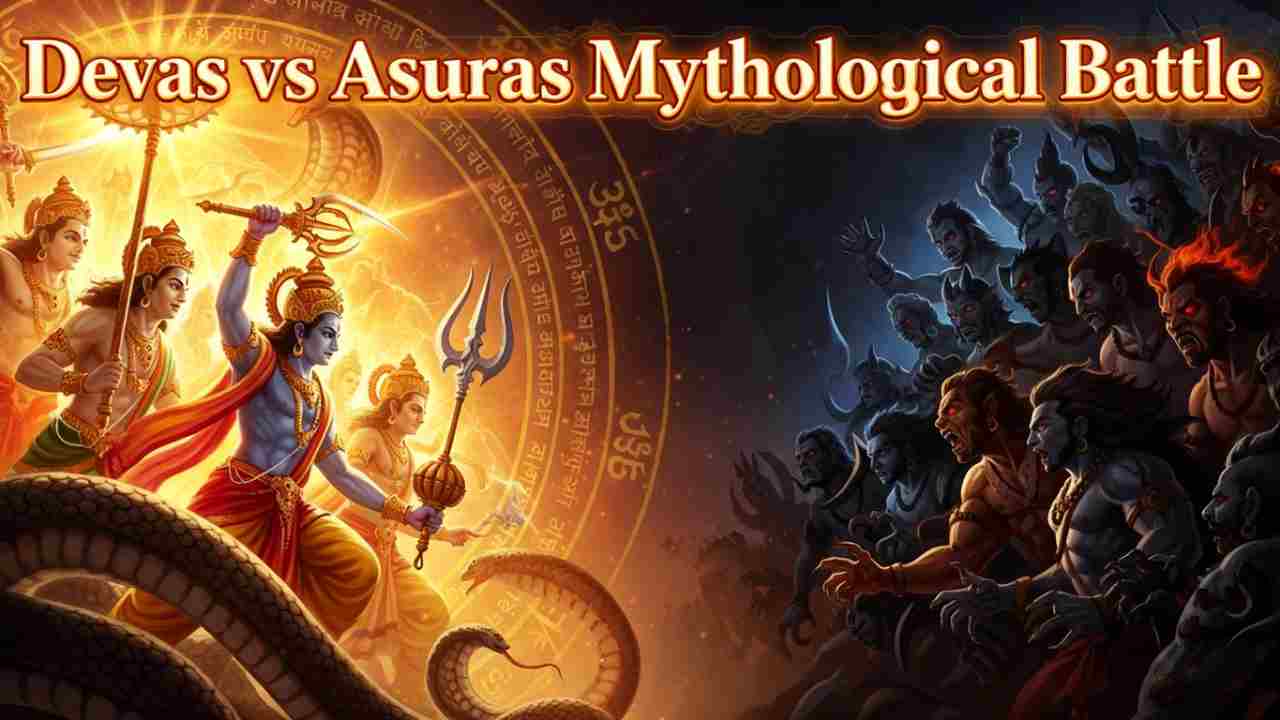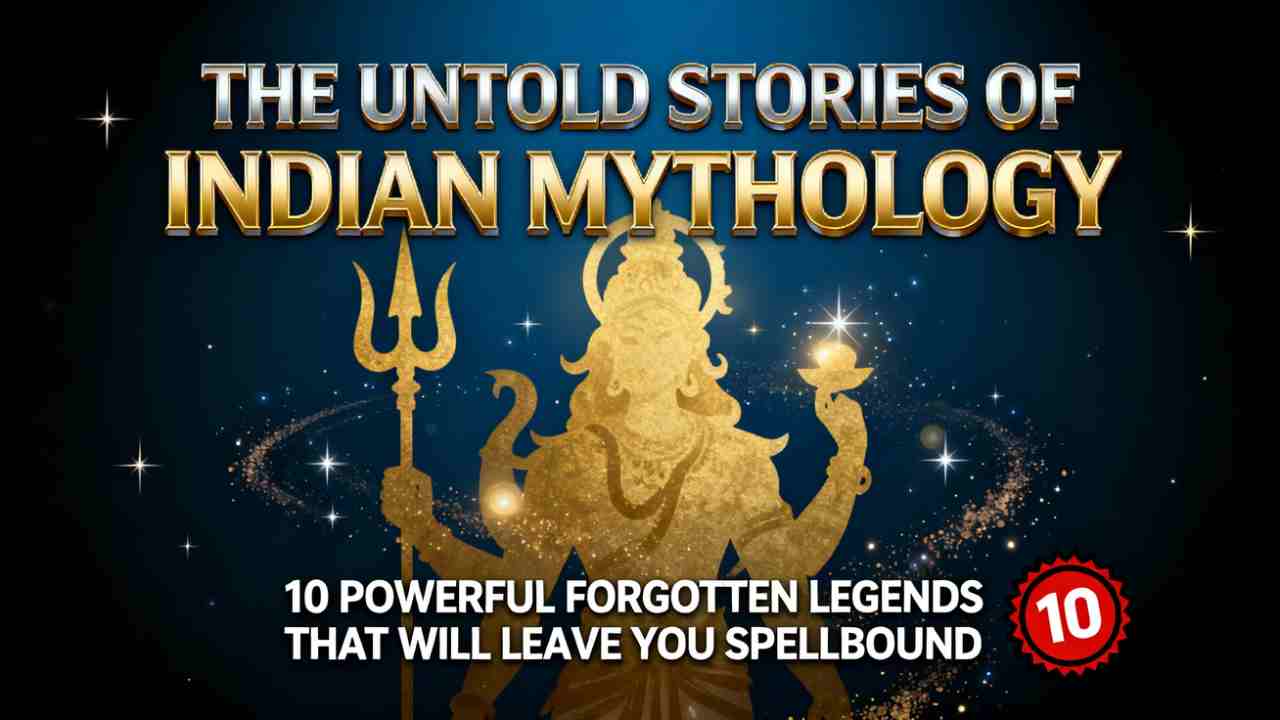
Indian mythology is an endless ocean of wisdom, courage, and divine mystery. From the mighty tales of the Ramayana and Mahabharata to the poetic verses of the Puranas, the stories of gods, demons, and humans have shaped the cultural imagination of India for thousands of years. Yet, beyond these celebrated epics lie hundreds of The Untold Stories of Indian Mythology tales of forgotten heroes, misunderstood villains, and divine beings whose stories remain hidden in the shadows of time.
These untold stories of Indian mythology are more than just narratives. They are reflections of human emotions, moral choices, and cosmic truths. They speak of love and revenge, power and sacrifice, destiny and redemption. In this article, we will journey through the unseen corners of Indian mythology, exploring stories that deserve to be retold, reimagined, and remembered by modern audiences.
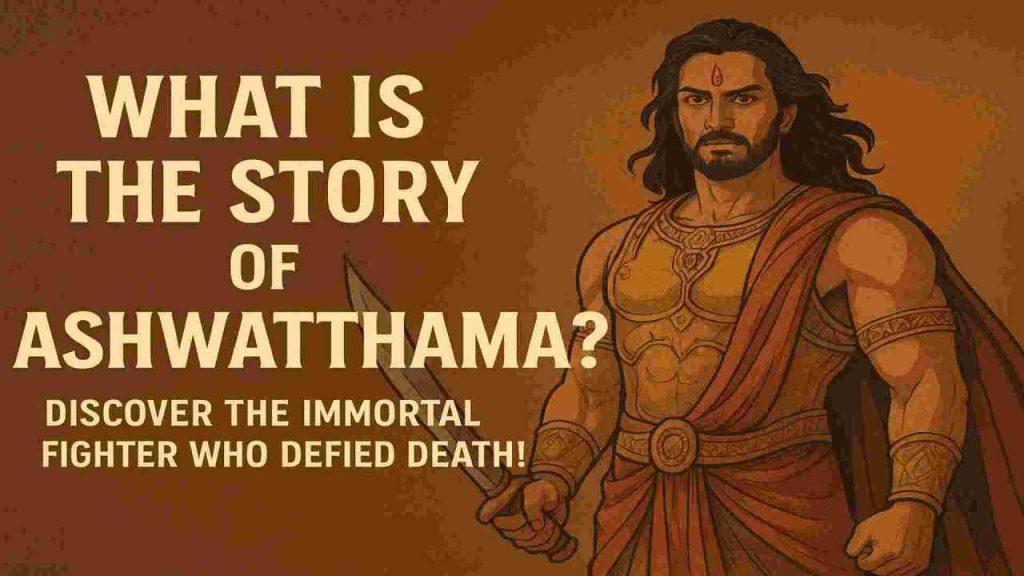
Among The Untold Stories of Indian Mythology, none is more haunting than that of Ashwatthama, the son of Guru Dronacharya. Known as one of the greatest warriors in the Mahabharata, Ashwatthama’s story is a tragic reminder of the burden of immortality.
After the Kurukshetra war ended, Ashwatthama, blinded by rage after his father’s death, released the divine weapon Brahmastra against the unborn child of Uttara. This act almost ended the Pandava lineage. Enraged, Lord Krishna cursed him to roam the Earth forever, bearing wounds that would never heal.
Imagine a being walking through centuries seeing empires rise and fall, civilizations crumble, and the world evolve, yet never finding peace. A graphic retelling of this myth could explore his loneliness, guilt, and search for redemption. Would he become a silent observer of time or a hidden influencer in history?
This tale stands as one of the most thought-provoking among The Untold Stories of Indian Mythology, raising eternal questions about sin, forgiveness, and the price of vengeance.
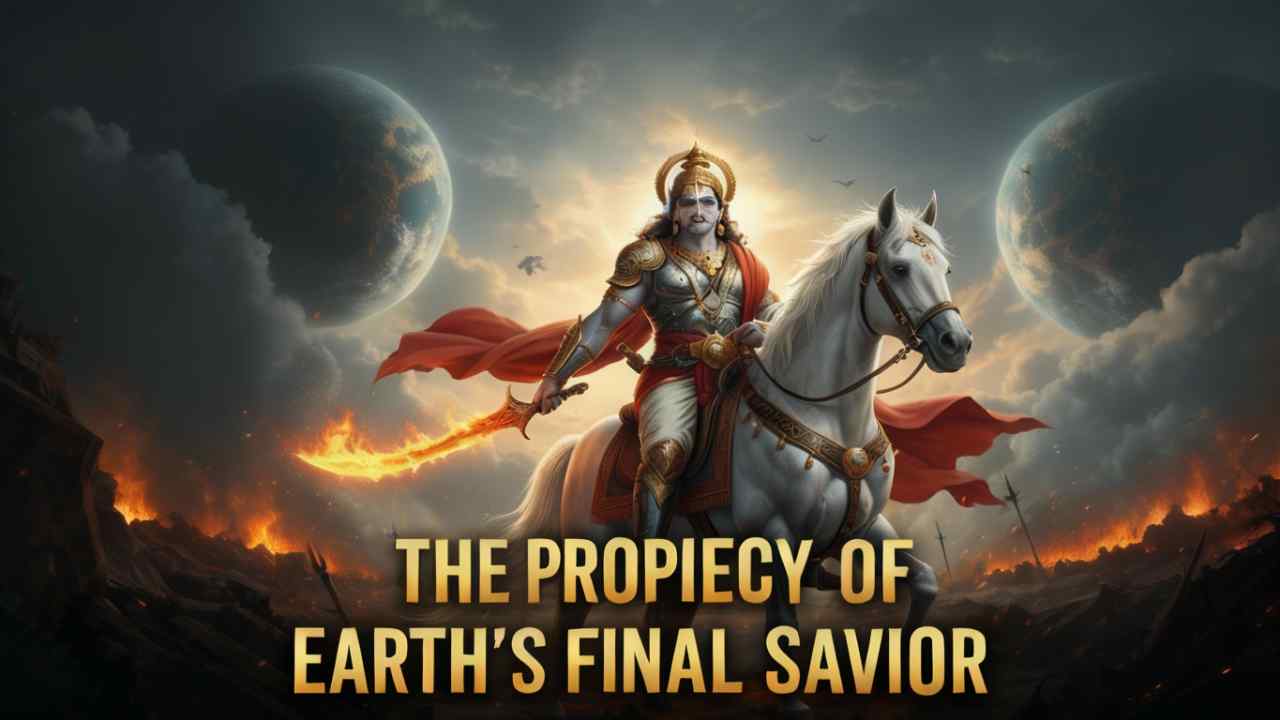
While everyone knows of Rama and Krishna, few speak about Kalki, the tenth and final avatar of Lord Vishnu. According to prophecy, Kalki will descend at the end of Kali Yuga the age of darkness to destroy evil and restore Dharma.
In The Untold Stories of Indian Mythology, Kalki’s narrative stands out for its futuristic and apocalyptic tone. Unlike previous avatars, Kalki’s story has not yet occurred, making it a tale of anticipation and prophecy.
One can imagine a world drowned in chaos, where morality collapses, truth is twisted, and technology replaces faith. From this darkness arises a warrior riding a white horse, wielding the celestial sword of justice. How would Kalki adapt to the modern world’s corruption? Would he fight against powerful corporations, political empires, or machines that mimic gods?
Reimagining Kalki’s story blends mythology with dystopian fiction, giving readers a glimpse into the possible end and rebirth of the world. It reminds us that hope and righteousness always return, no matter how long the night lasts.
3. Uloopi – The Forgotten Naga Princess
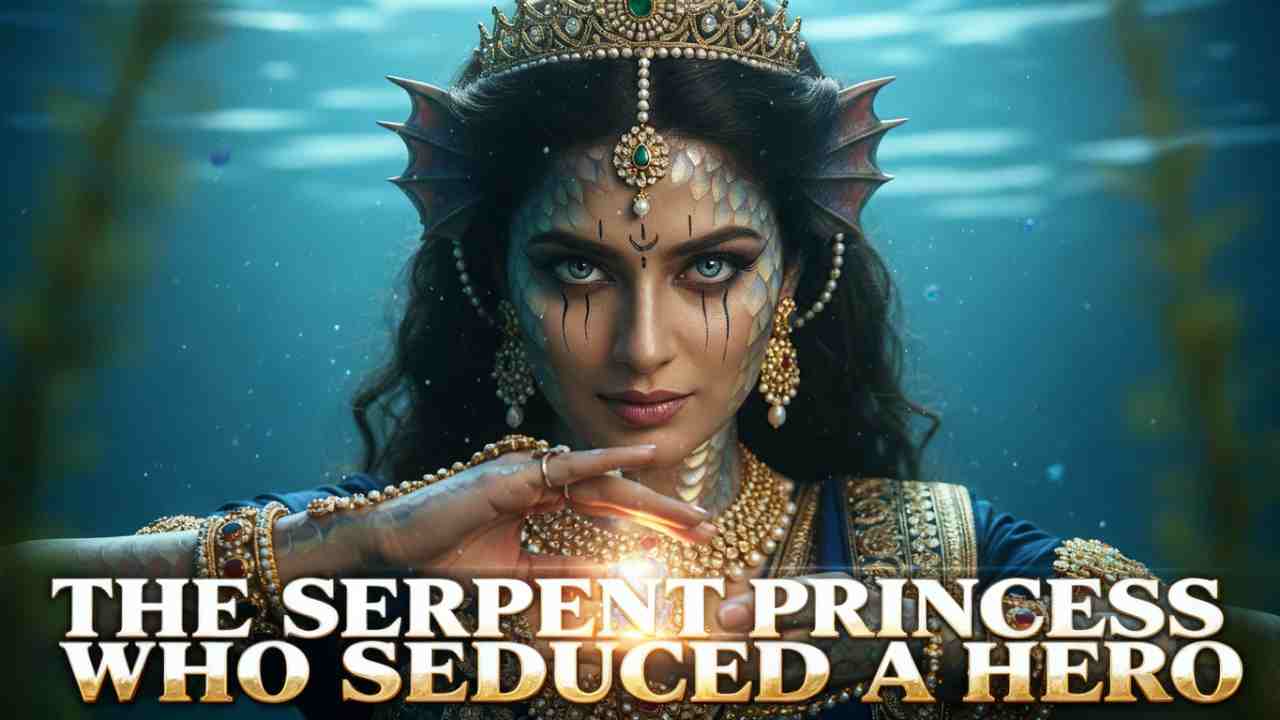
In The Untold Stories of Indian Mythology, the story of Uloopi, the serpent princess, shines as a tale of love, power, and sacrifice. Married to the warrior Arjuna during his exile, Uloopi was not a mere side character. She was a strong, wise, and magical being who saved Arjuna’s life when he was struck down in battle.
Uloopi belonged to the Naga clan, the serpent people of the underworld. Her love for Arjuna crossed species and worlds, proving that devotion knows no bounds. Yet her political acumen made her even more remarkable, she forged alliances and ensured peace between Nagas and humans.
A graphic novel could portray her as a brave queen torn between duty and love, fighting not just battles of the sword but of identity. Her control over the elements, her strategic brilliance, and her mystical aura make her one of the most underrated women in The Untold Stories of Indian Mythology.
Uloopi’s journey teaches that true strength often lies in compassion, and even in a world dominated by gods and kings, a woman’s wisdom can shape destiny.
4. Barbarika – The Forgotten Hero of Kurukshetra

Another fascinating figure in The Untold Stories of Indian Mythology is Barbarika, the grandson of Bhima and son of Ghatotkacha. Gifted with three divine arrows that could destroy the world, Barbarika was bound by his vow to fight for the weaker side.
Before the Mahabharata war began, Krishna tested Barbarika’s resolve. Realizing that his power would end the war instantly and disrupt the balance of Dharma, Krishna disguised himself as a Brahmin and asked for Barbarika’s head in sacrifice. The young warrior willingly offered it, watching the entire war unfold from atop a hill.
His severed head is said to have witnessed every moment of the epic battle. What thoughts filled his mind as destiny played out before his eyes? Could he have changed the outcome if he had lived?
Barbarika’s sacrifice is a powerful reminder of humility and duty. In The Untold Stories of Indian Mythology, he symbolizes the fine line between absolute power and divine restraint.
5. Shikhandi – The Warrior of Two Lives

Among the most emotionally powerful Untold Stories of Indian Mythology is that of Shikhandi, born as a woman named Amba and later reborn as a man to fulfill her destiny. In her previous life, Amba was humiliated by Bhishma and vowed to be the cause of his death.
Reborn as Shikhandi, she carried the memories and rage of her past life. Her struggle with gender identity, societal rejection, and destiny created one of the most complex characters in Indian mythology.
In the Kurukshetra War, Krishna used Shikhandi as a strategic weapon against Bhishma, knowing he would never attack a woman. This act fulfilled Amba’s vow but left Shikhandi questioning whether vengeance truly brought peace.
Her story resonates deeply in today’s world, touching upon themes of gender, identity, and redemption. Shikhandi’s courage and determination make her a hero far ahead of her time. A timeless figure in The Untold Stories of Indian Mythology.
6. Gandhari – The Silent Queen’s Curse
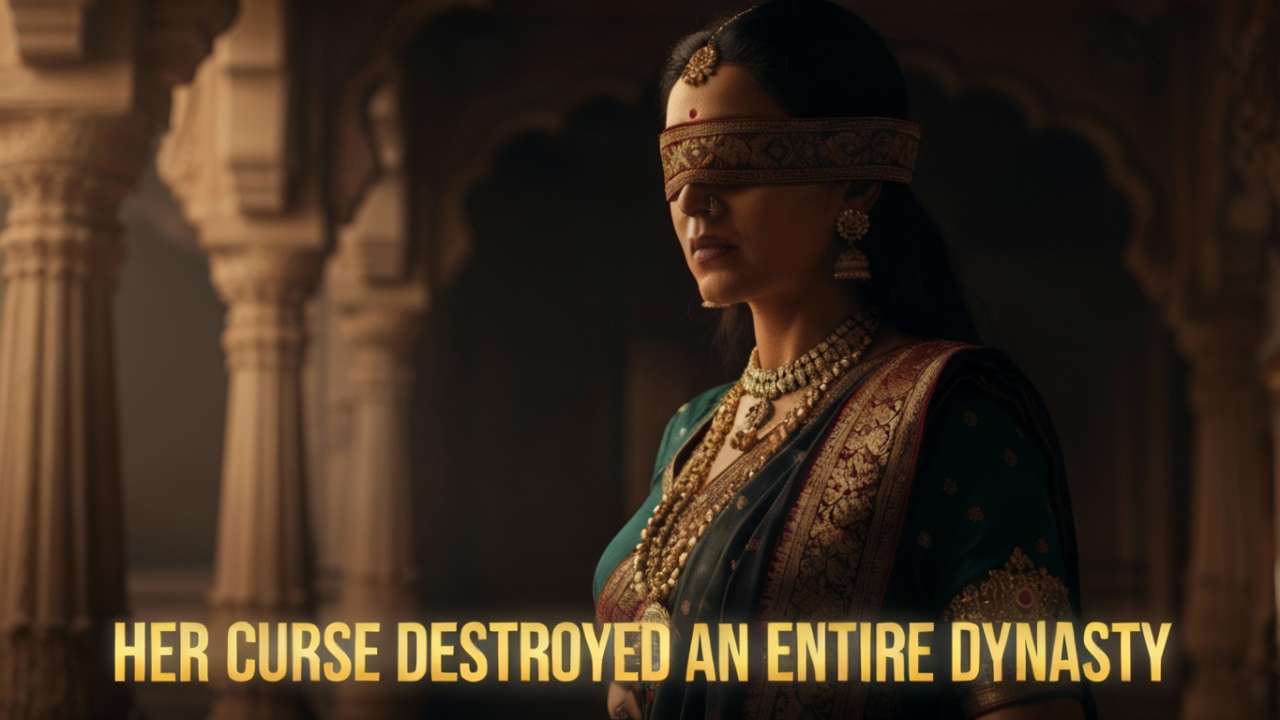
The tale of Gandhari, the mother of the Kauravas, is often overshadowed by the grand events of the Mahabharata, yet it is one of the most poignant narratives in The Untold Stories of Indian Mythology.
Gandhari chose to blindfold herself for life to share her husband Dhritarashtra’s blindness. Despite being righteous and wise, she watched helplessly as her sons fell victim to greed and hatred. After losing all her children in war, her grief turned into a curse that changed history.
In her anguish, she cursed Lord Krishna, foretelling the destruction of his Yadava clan. Her words came true, showing that even the divine cannot escape the consequences of fate.
Her story, filled with sorrow and moral complexity, reflects the tragedy of a woman torn between love for her sons and her understanding of Dharma. It’s a heartbreaking example of maternal devotion and divine justice that deserves a place among The Untold Stories of Indian Mythology.
7. Ghatotkacha – The Half-Demon Hero

Half-demon and half-human, Ghatotkacha was the son of Bhima and Hidimba. His story is one of bravery, loyalty, and ultimate sacrifice. Possessing supernatural strength and mastery over illusion, he was a terror to his enemies and a saviour to the Pandavas.
His night-time powers made him nearly invincible. But when Karna used the divine weapon Vasavi Shakti against him, Ghatotkacha chose to die in such a way that his massive body crushed thousands of Kaurava soldiers.
In The Untold Stories of Indian Mythology, his life represents the idea of destiny embraced with courage. He knew his death was certain but turned it into a weapon for good. His loyalty and sacrifice make him one of mythology’s most underrated heroes.
8. Chitrangada – The Warrior Queen of Manipur
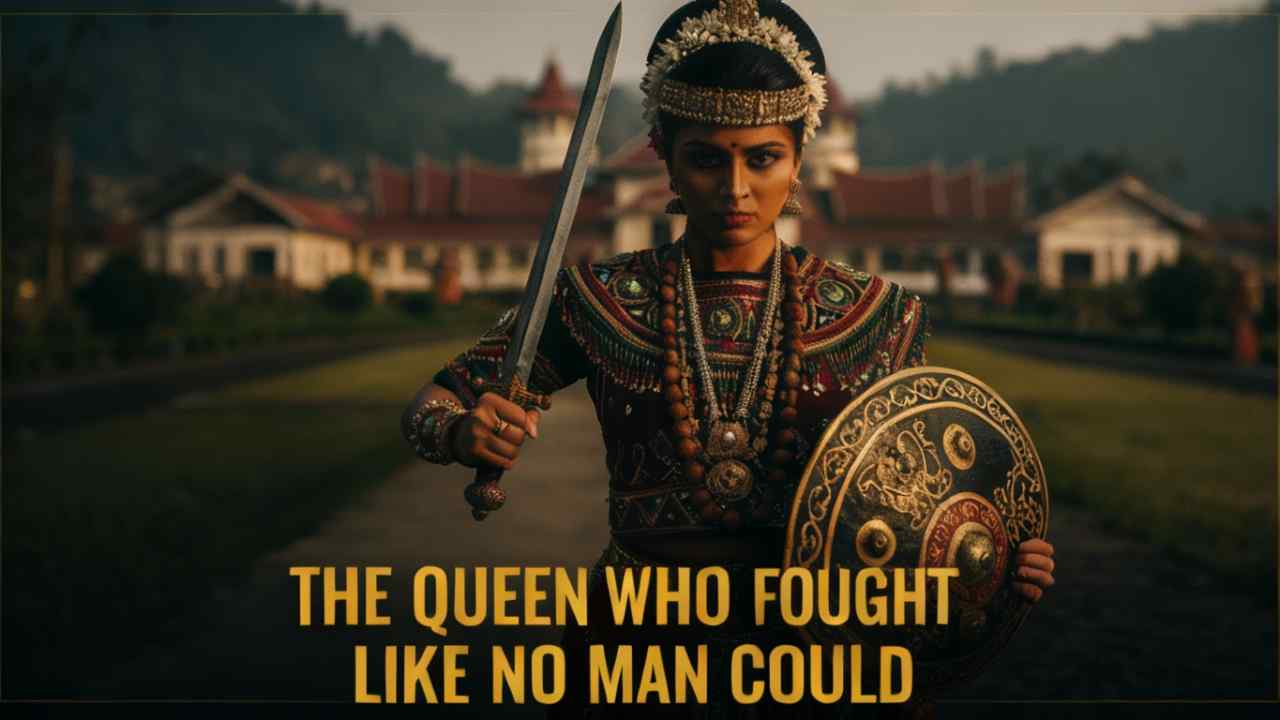
In The Untold Stories of Indian Mythology, Chitrangada’s tale stands out as one of empowerment and equality. Unlike many women of her time, she was a warrior trained in combat and the ruler of Manipur. When Arjuna met her during his exile, he was struck not only by her beauty but also by her strength and wisdom.
Chitrangada agreed to marry Arjuna but made it clear that her duty as a ruler would always come first. Their love story was one of mutual respect, not dominance. She defied the stereotypes of her era, proving that leadership and love can coexist.
Her story would make a powerful graphic novel, filled with war, politics, and emotion. It celebrates feminine strength and individuality, making her one of the most inspiring figures in The Untold Stories of Indian Mythology.
9. The Battle of Indra and Vritra – A Fight for the Cosmos
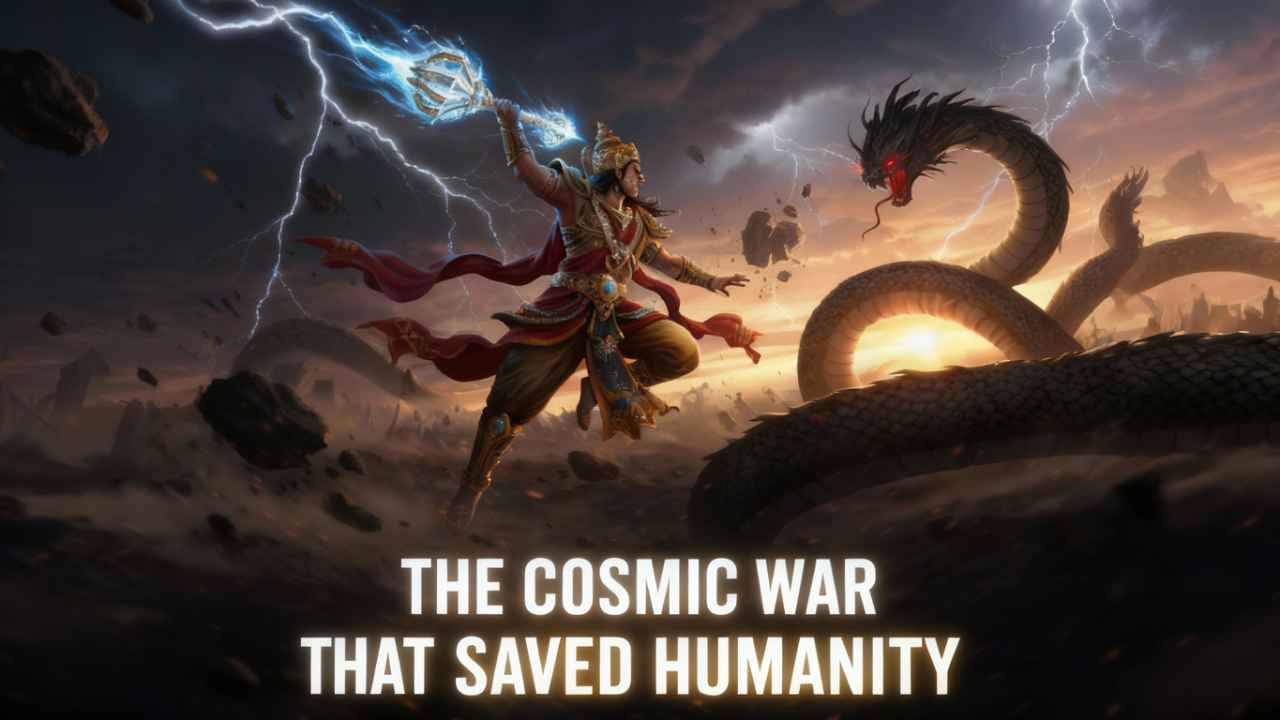
One of the most spectacular yet forgotten Untold Stories of Indian Mythology is the celestial war between Indra and Vritra, the cosmic serpent. Vritra captured the divine waters, plunging the world into drought and despair.
Defeated and humiliated, Indra fled until the sage Dadhichi sacrificed his life, allowing the gods to forge the Vajra, a weapon made from his bones. With it, Indra defeated Vritra, restoring balance to the universe.
This myth goes beyond warfare. It’s a lesson in humility, sacrifice, and renewal. Even gods must learn from failure to rise again. The story of Indra and Vritra beautifully captures the eternal cycle of fall and redemption that lies at the heart of The Untold Stories of Indian Mythology.
10. Narada – The Mischievous Sage with a Divine Purpose
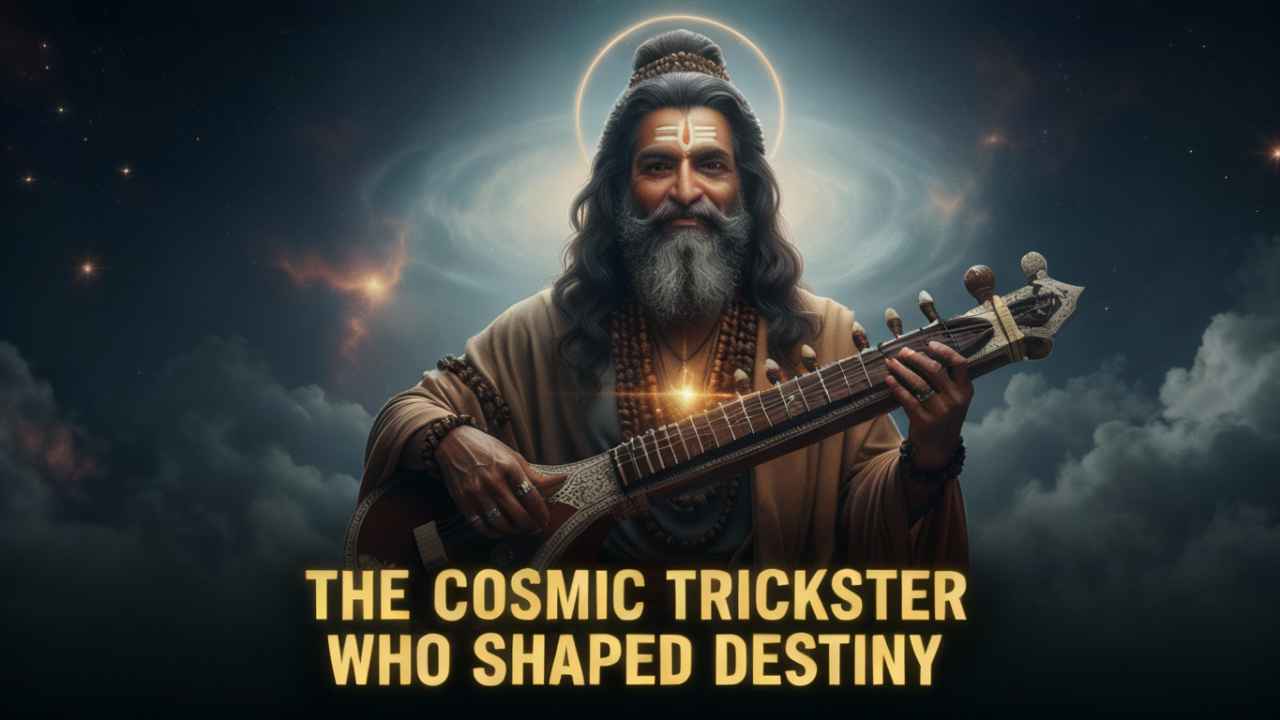
No collection of The Untold Stories of Indian Mythology is complete without Narada, the celestial sage known for his mischief and wisdom. Though often portrayed as a troublemaker, Narada’s role was much deeper. His actions, though chaotic, always led to the greater good.
In one tale, Narada’s ego led him to challenge Lord Vishnu, only to be humbled by illusion. In another, he guided kings, demons, and gods alike, teaching them through his wit and cleverness.
A graphic retelling could portray Narada as a cosmic traveller, moving between worlds, influencing destinies, and reminding us that even divine mischief can be a form of wisdom. His stories embody the playfulness and depth that make The Untold Stories of Indian Mythology endlessly fascinating.
Why These Stories Matter Today?
These Untold Stories of Indian Mythology are not just forgotten tales. They are mirrors reflecting the eternal truths of existence. Each story represents a piece of human emotion: Ashwatthama’s guilt, Uloopi’s love, Shikhandi’s identity, Gandhari’s grief, and Ghatotkacha’s courage.
In a world obsessed with power and perfection, these myths remind us of vulnerability, redemption, and purpose. They show that mythology isn’t just about gods and demons. It’s about us, our struggles, and our search for meaning.
Modern storytelling mediums like graphic novels, animation, and cinema can breathe new life into these ancient tales, making them accessible and relatable to younger generations.
Final Thoughts: Rediscovering the Magic of Forgotten Myths

The Untold Stories of Indian Mythology are timeless treasures waiting to be rediscovered. They carry lessons of morality, courage, and humanity wrapped in divine drama and cosmic wonder. Whether it’s the immortal wanderings of Ashwatthama or the apocalyptic prophecy of Kalki, these stories hold immense potential to inspire, entertain, and enlighten.
By reimagining these ancient tales through creative storytelling, we not only preserve India’s cultural heritage but also celebrate its ability to adapt, evolve, and continue to inspire.
So the next time you hear of gods and heroes, remember the greatest lessons often lie not in the stories we know, but in The Untold Stories of Indian Mythology that still whisper from the pages of time.
FAQs
1. What are the Forgotten Legends of Indian Mythology?
The Forgotten Legends of Indian Mythology are ancient tales and heroic stories that are often overlooked in mainstream retellings of the epics like the Mahabharata and Ramayana. These stories reveal hidden wisdom and the cultural depth of India’s spiritual past.
2. Why are some legends of Indian mythology forgotten today?
Many Forgotten Legends of Indian Mythology were lost over time due to oral transmission, regional storytelling traditions, and limited written documentation. Modern focus on major characters like Rama and Krishna also led to lesser-known heroes being overshadowed.
3. How do the Forgotten Legends of Indian Mythology inspire us today?
These forgotten tales inspire modern readers with timeless lessons of courage, devotion, and dharma. They remind us that even lesser-known heroes played powerful roles in shaping moral and cultural values in ancient India.
4. Which is one of the most fascinating Forgotten Legends of Indian Mythology?
One captivating tale is that of Barbarika, the grandson of Bhima, who possessed immense power but chose peace over pride. His story highlights compassion, wisdom, and self-sacrifice. These qualities often missed in mainstream epics.
5. Where can I read more about the Forgotten Legends of Indian Mythology?
You can explore these stories in ancient scriptures like the Puranas and regional folklore collections. Several modern authors are also reintroducing these Forgotten Legends of Indian Mythology through books, podcasts, and online storytelling platforms.
